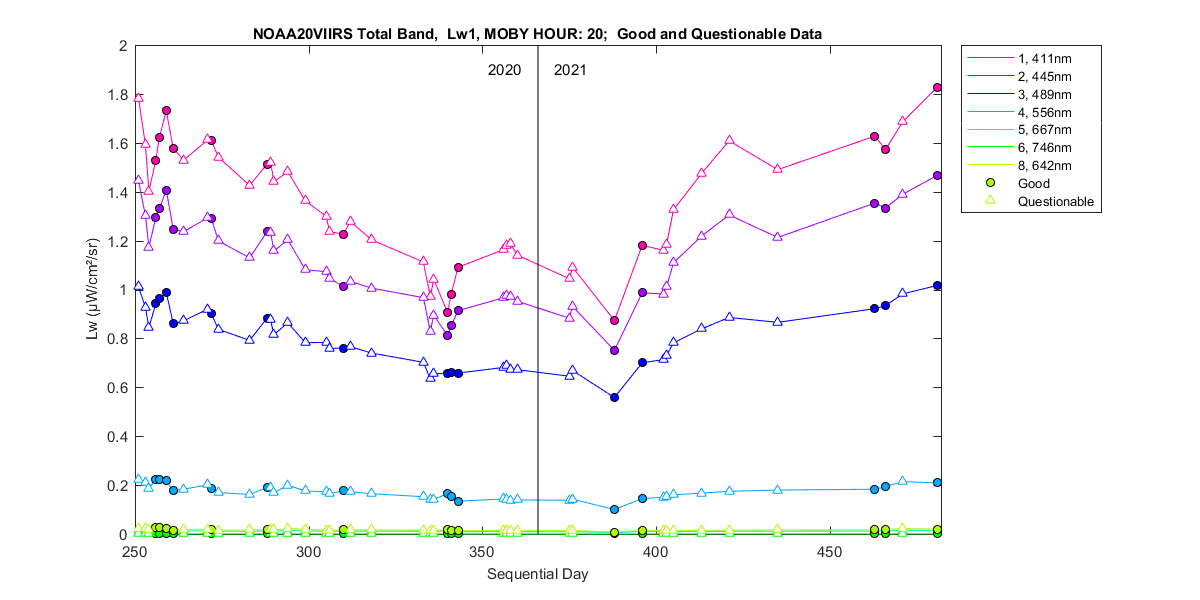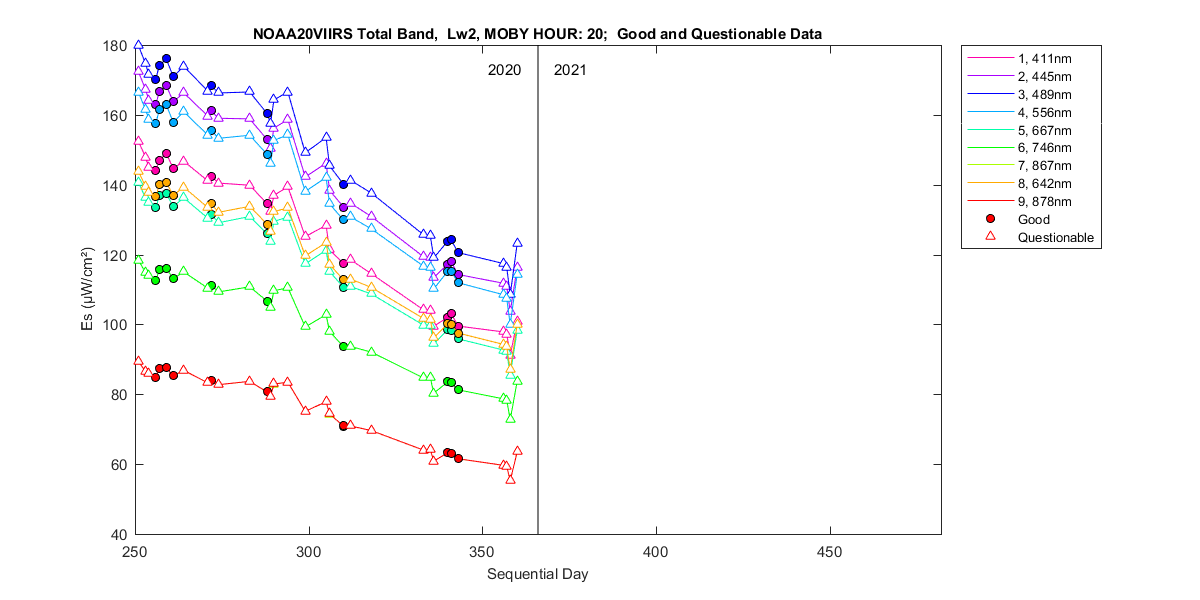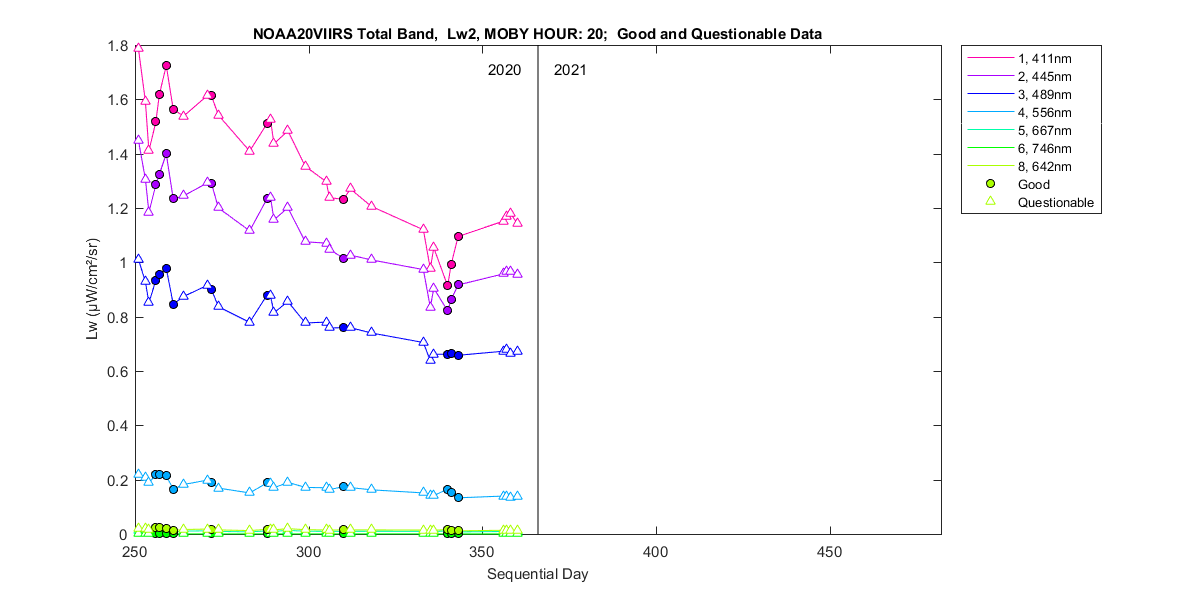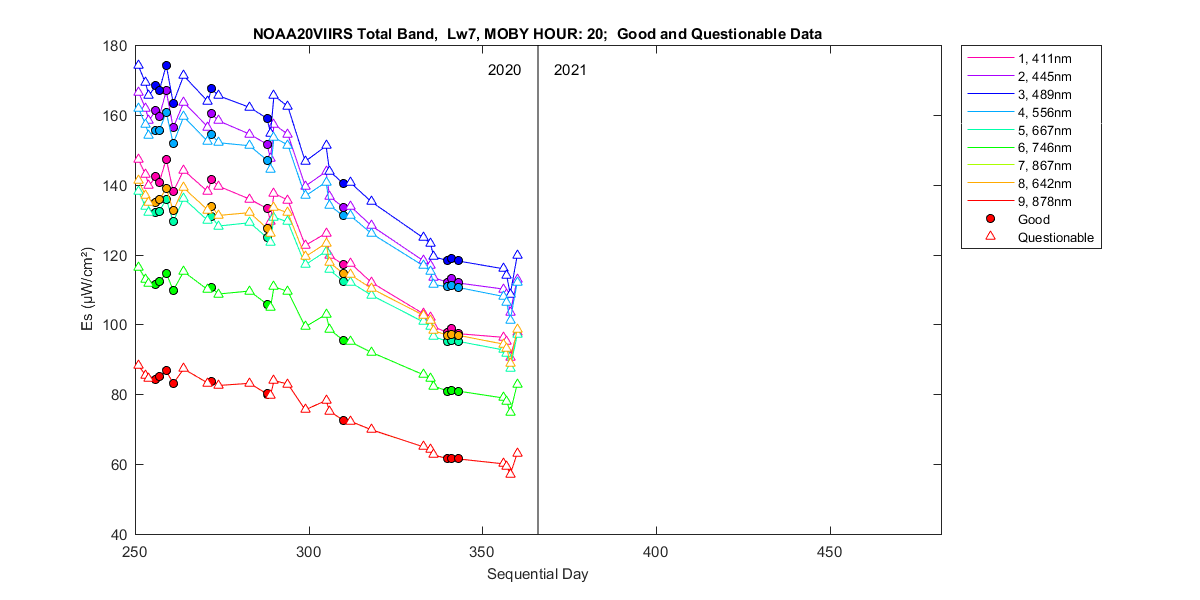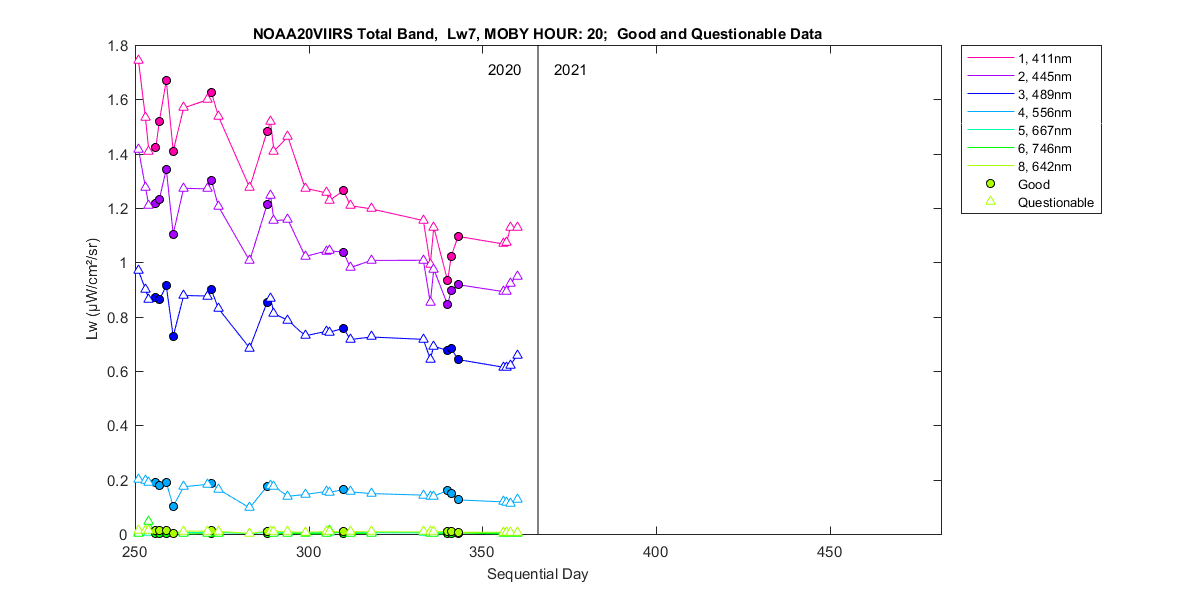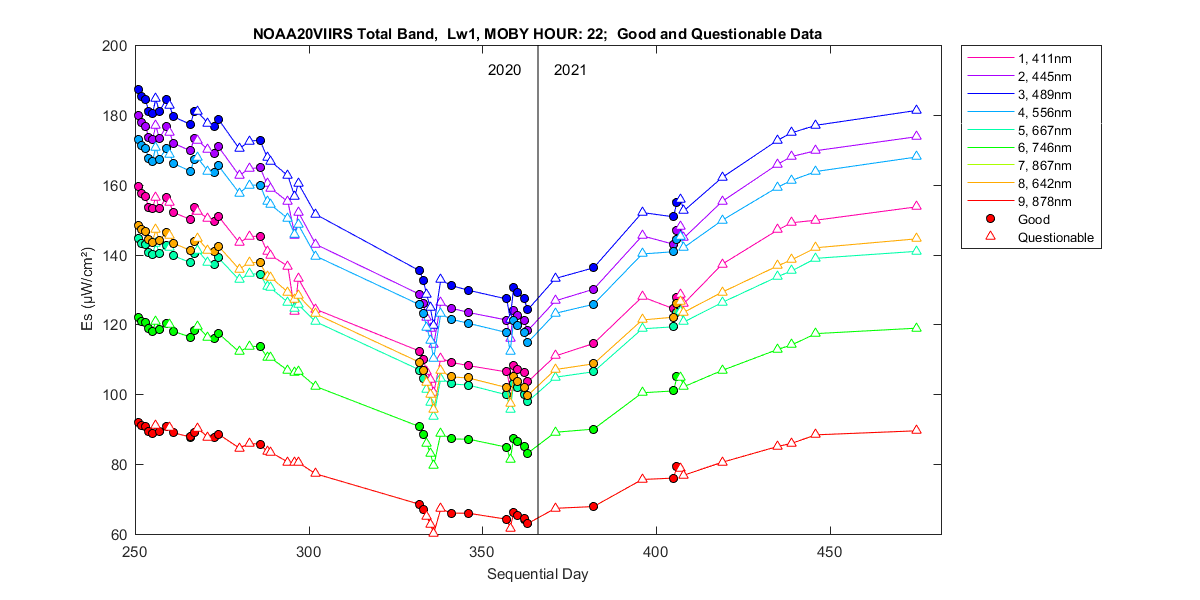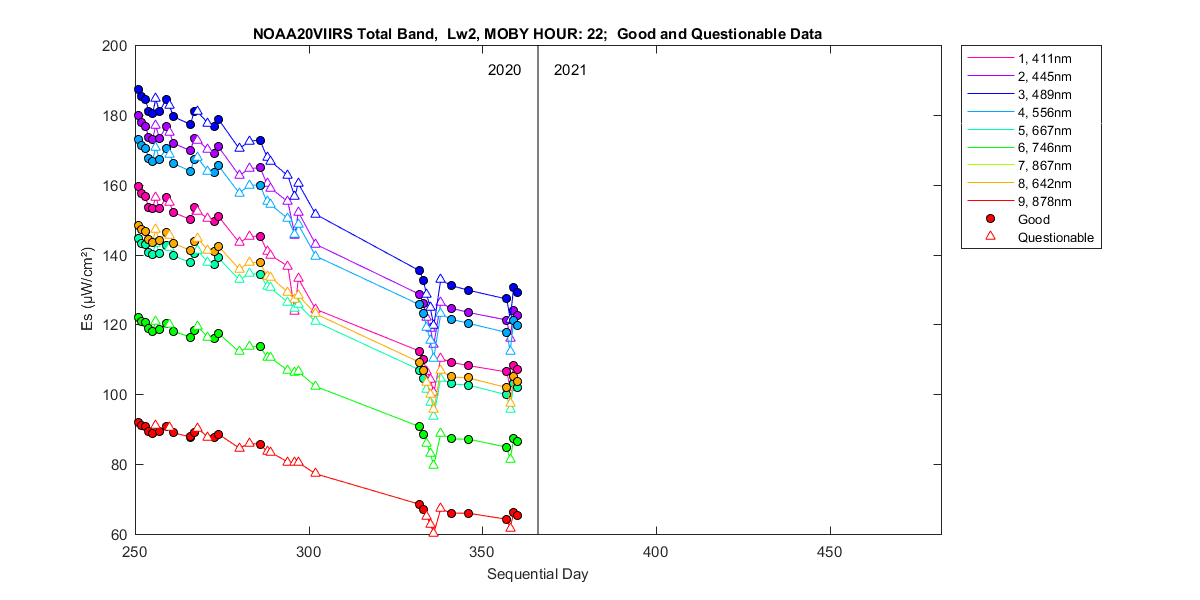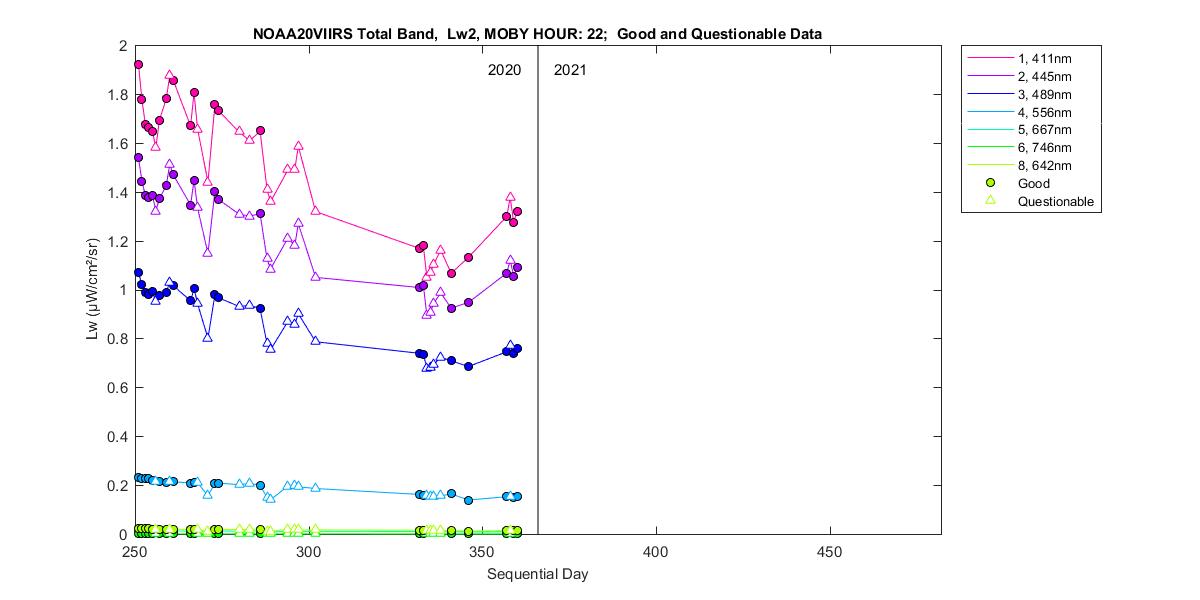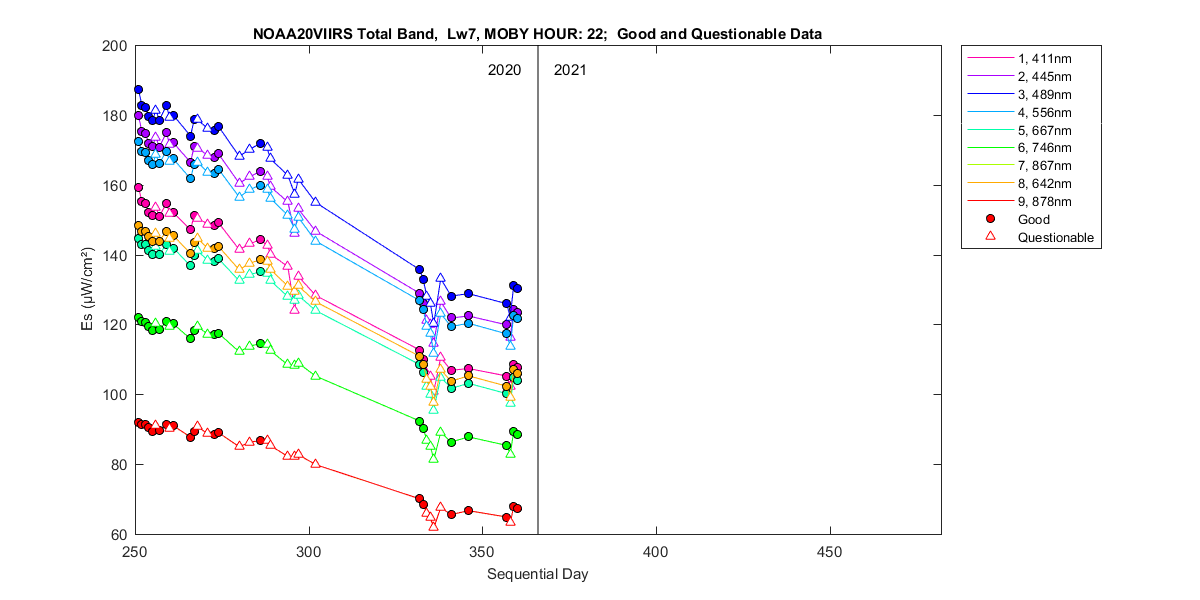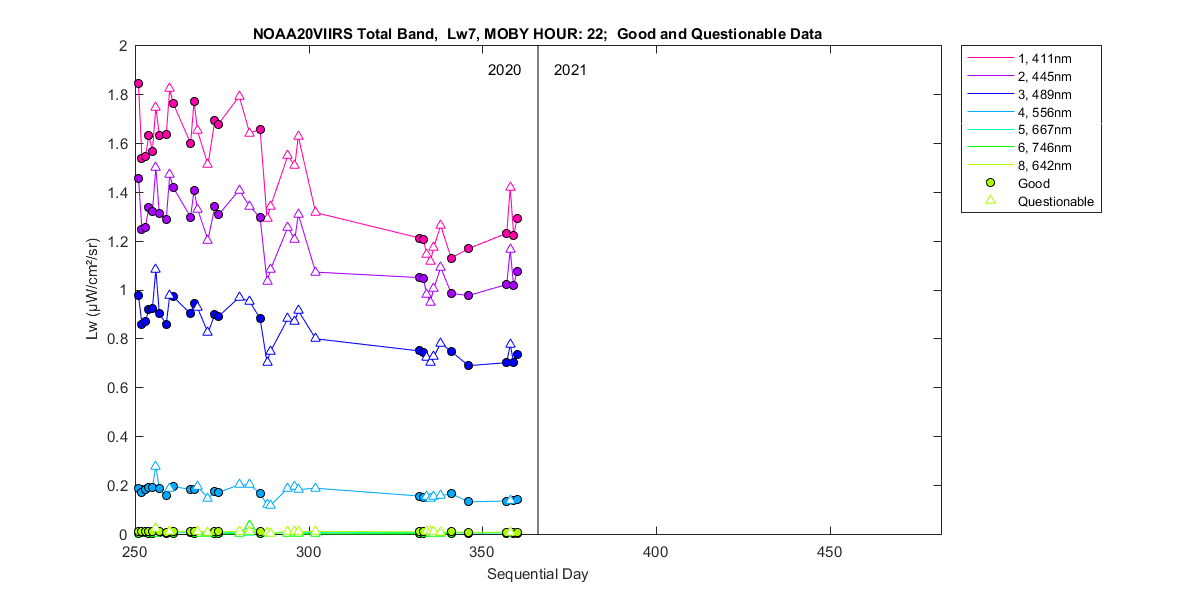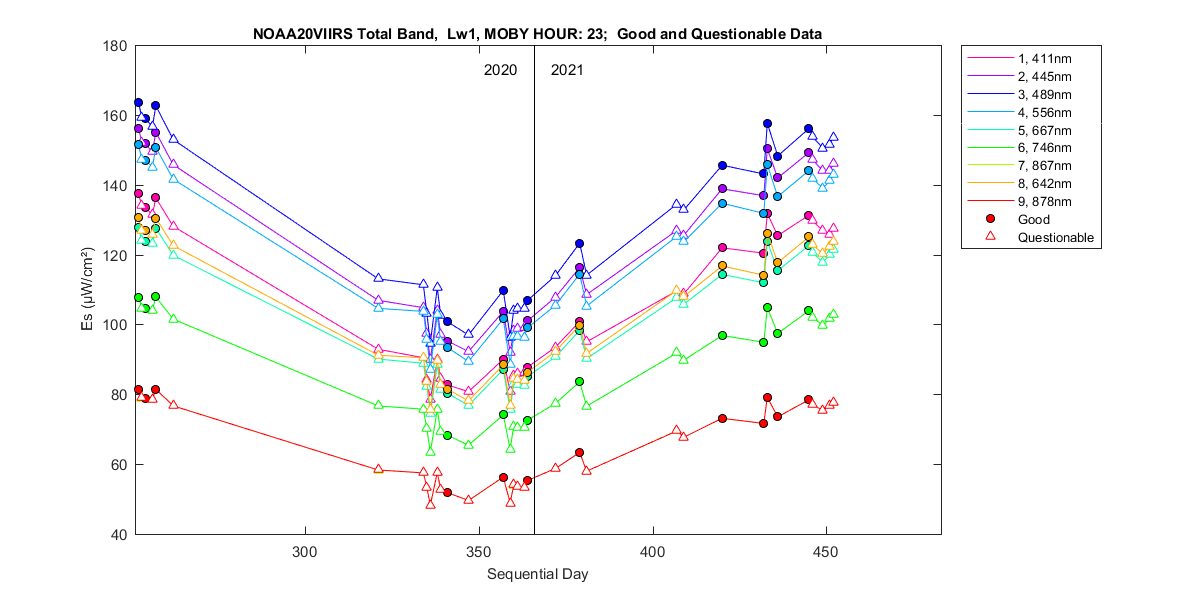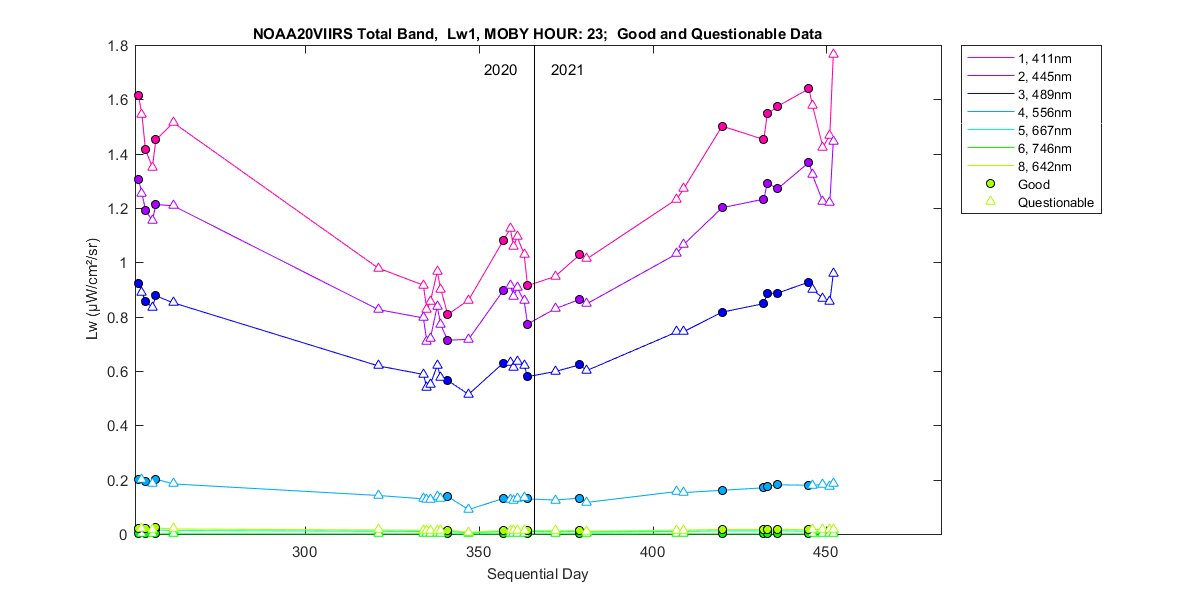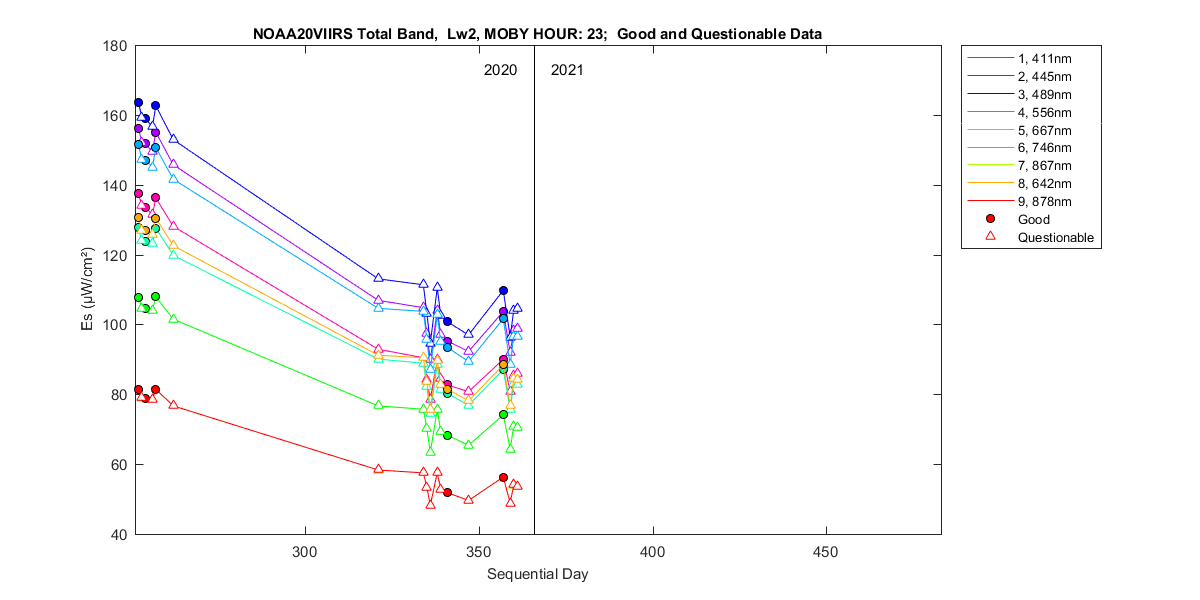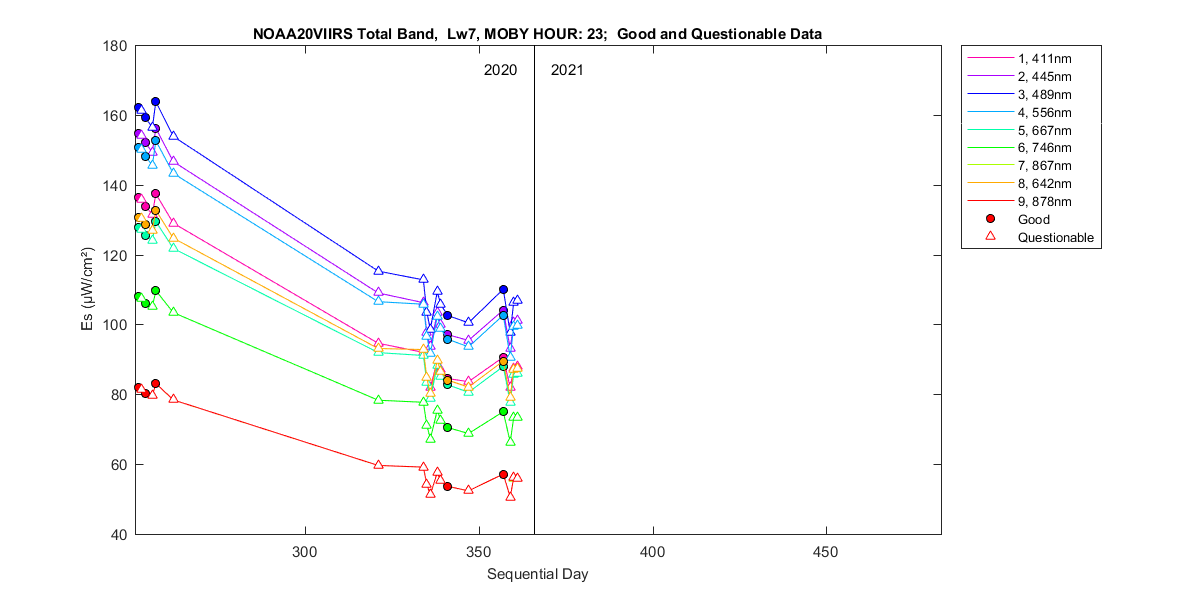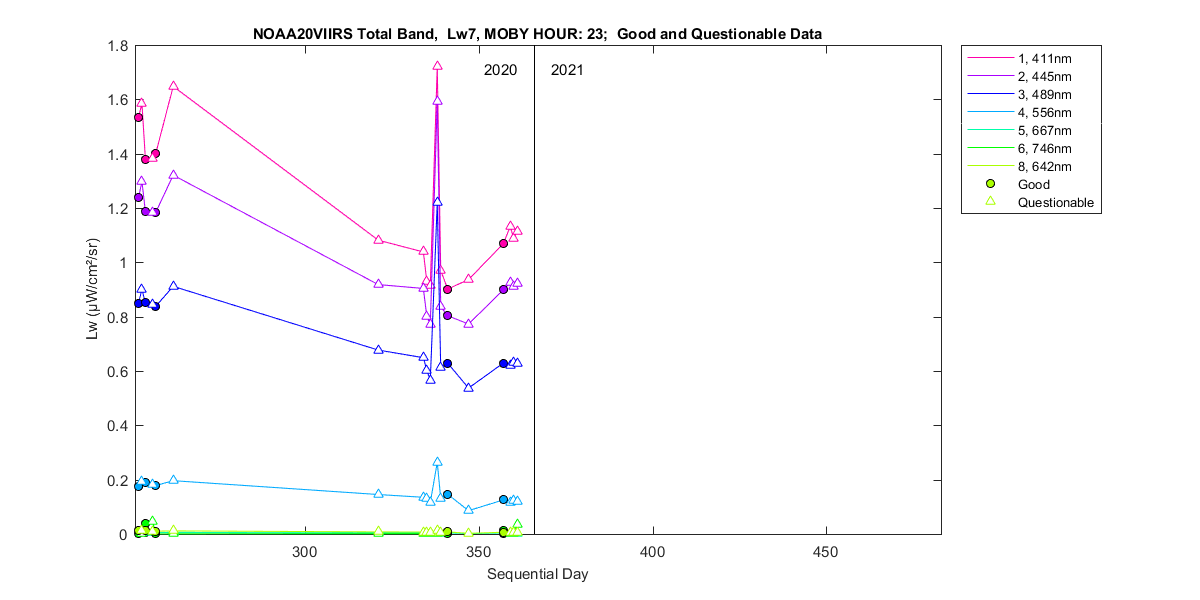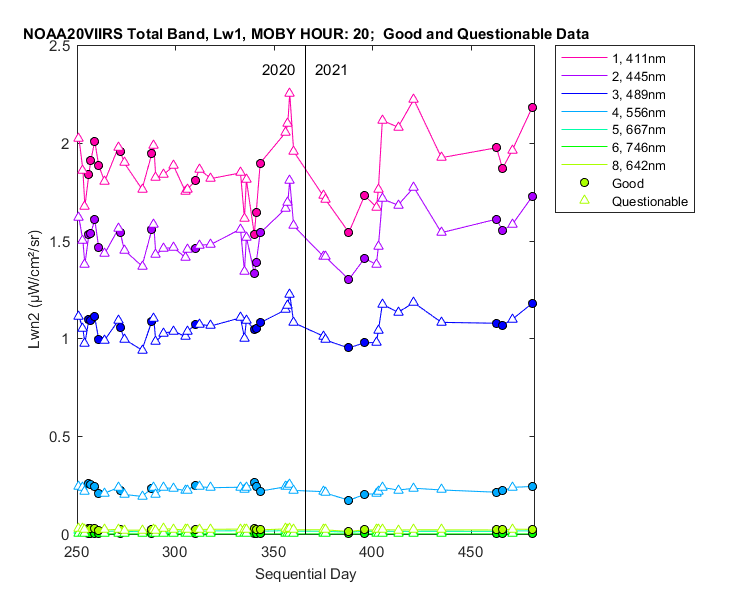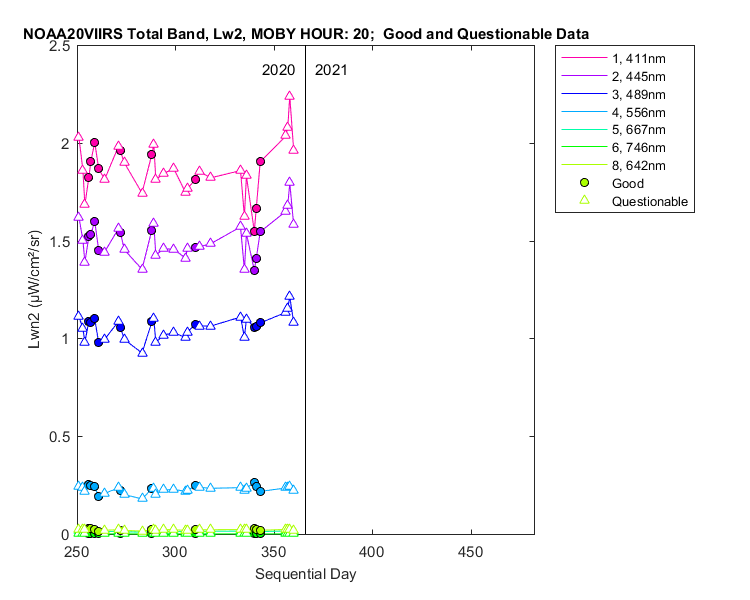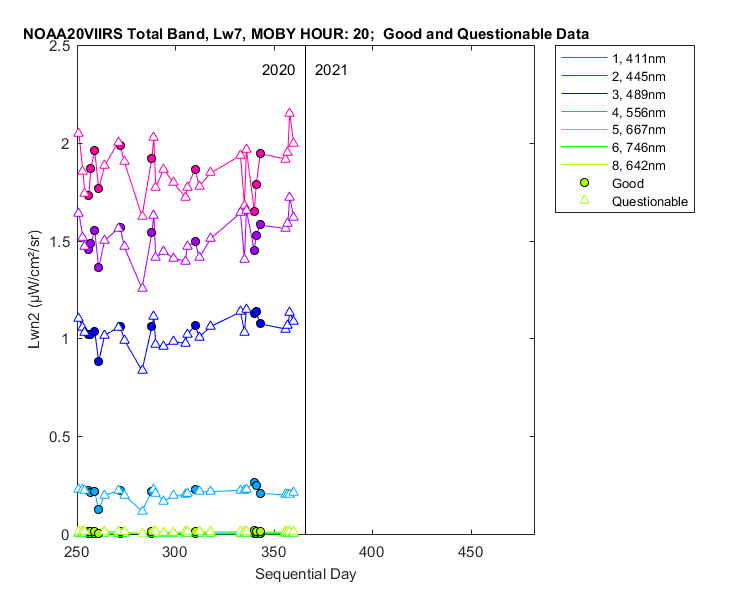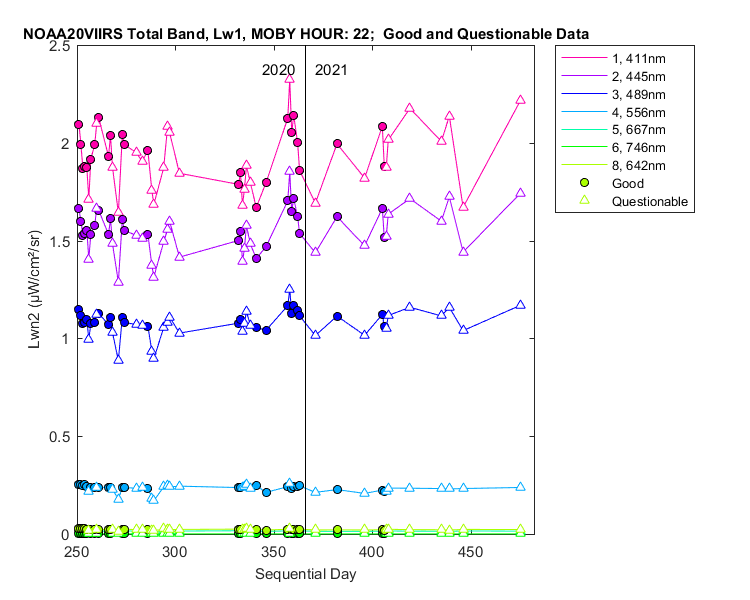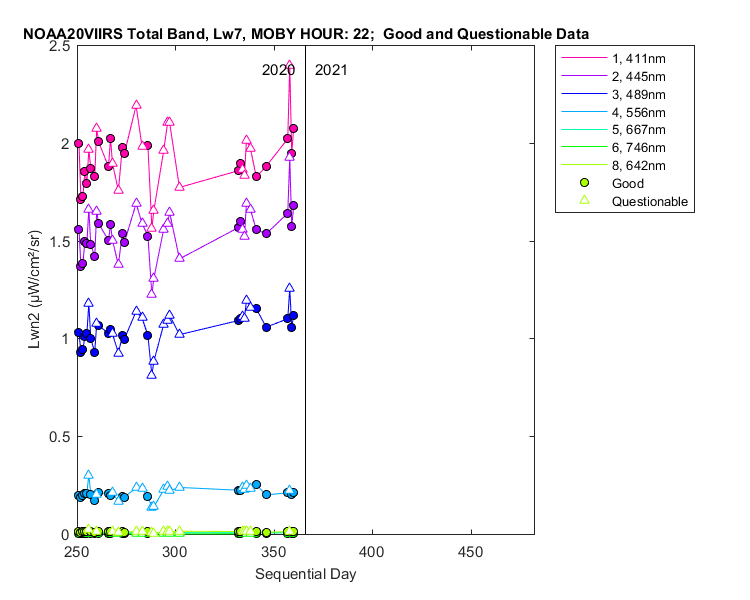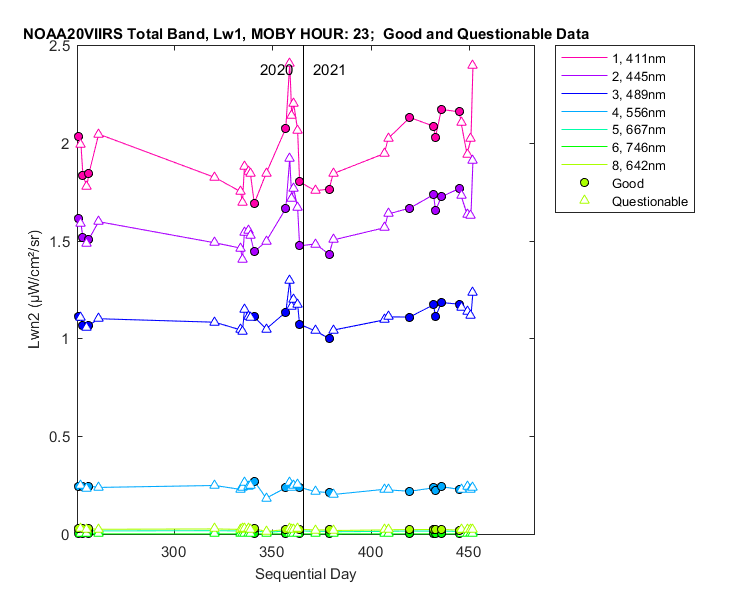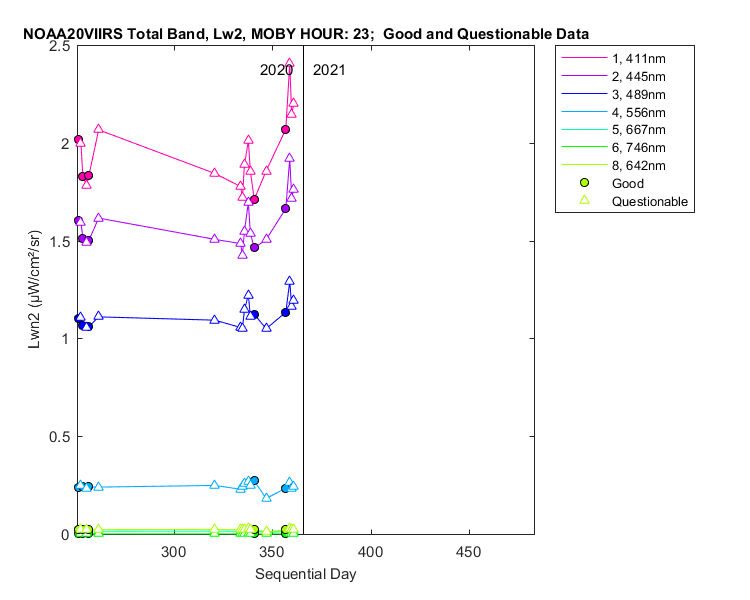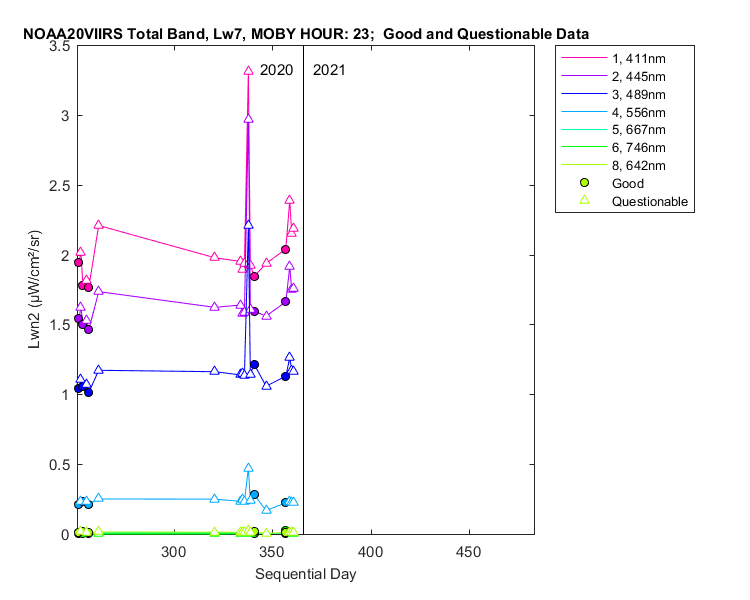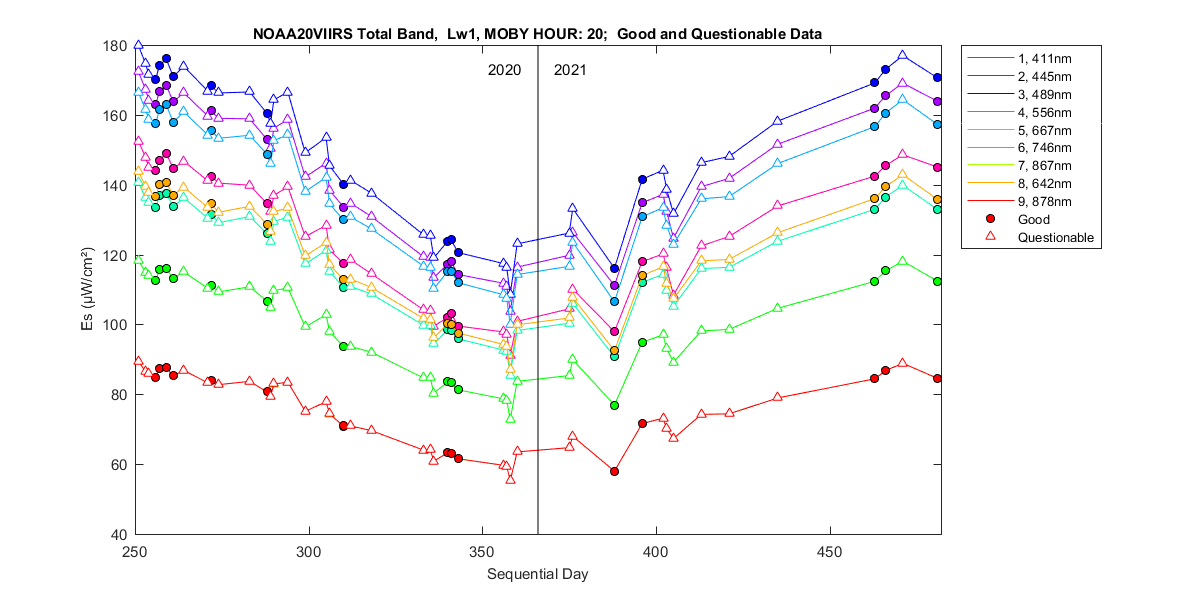
Satellite band averaged data: water-leaving radiance, surface irradiance and solar normalized water-leaving radiance. These values are given as the mean flux (not the total flux) for each band. The total and in-band averages are calculated for each satellite. The in-band is calculated by limiting the relative spectral response to within 1% of the maximum value. A separate data listing (denoted by it's hour) is presented when MOBY collects more than one file per day. Six water-leaving radiances can be calculated from different combinations of MOBY four radiance collectors. The best water-leaving radiance is Lw1, determined from the upper two arms. Lw7 is also included and is calculated from the middle and bottom arms.
MOBY team message - update after reprocessing with postcals:
We have reprocessed deployment M270 using information from the post-deployment calibration, and have uploaded the new data. In the reprocessing we were able to verify the products that used the bottom arm measurement. However the data for this arm was not good after 12/26/20. In the process though, by eliminating the data from this arm, we were able to reclassify 14 days of Lw1 data as good. The reason for this is one criteria is matching KLu products, but now that we know the KLu products which use the bottom arm are bad after 12/26, we could reevaluate the situation for Lw1 in this time period.
MOBY team message:
M270 is in the water and collecting data now. The short story is that we are going to start posting data. The normal product of choice (Lw1, Lwn1, Lw21, and Lwn21) will be available with the normal classifications. Data which uses the lower arm (Lw2, Lw7) will be marked with the same classifications, but should be used with care.
While evaluating the data, we found that the calibration for the Lower arm Lu appears to provide data which is too low. The normal full process for calibration involves using a radiance source (OL425), long warm up times, measurements at night (cooler temperatures in tent and less ambient light), and several replicates. For the last few deployments, we have also measured an alternate radiance source (OL420) just before loading MOBY onto the ship. This measurement is done without as many of the careful considerations that we do for the normal pre-calibration (one measurement, during the day, shorter warm up time). We looked at these measurements, and found that while the top and middle arm were close, the predicted radiance from the OL420, using our pre-calibration was too low by about 10%, similar to what we are seeing in the field. We will be producing the data set using the pre-calibration data for Lutop and Lumid, but using the data obtained with the OL420 to generate a response function for Lubottom. This produces KLu products which are closer together then using the Pre-calibrations from the OL425 for all arms, but leaves the important Lw1 and Lwn1 product based on our more extensive pre-calibration data.
MOBY Team
● October 2016 Reprocessing Information
In Oct 2016, a reprocessing of the MOBY data began. Three problems are being addressed: 1) the method to extrapolate Kl to the surface has been improved to include Raman scattering and chlorophyll fluorescence; 2) the arm depths used in retrievals was increased by 0.234 m; and 3) a single pixel shift in the data for the RSG collected at a bin factor of 384 for deployments MOBY203 to MOBY253. Initially only MOBY254 to current deployments were reprocessed. These deployments did not have the RSG single pixel shift problem. So for MOBY254 to current deployments only correction 1 and 2 are applied. As the older deployments are processed the data will be added to this directory. MOBY203 to MOBY253 will have had all three corrections applied.
| Satellite Band | Hour | Lw&Es | Lwn2 |
|---|---|---|---|
| NOAA20VIIRS Total-Band | 20 | 1 | 1 |
| 22 | 1 | 1 | |
| 23 | 1 | 1 | |
| NOAA20VIIRS Total-Band | 20 | 7 | 7 |
| 22 | 7 | 7 | |
| 23 | 7 | 7 | |
| NOAA20VIIRS Total-Band | 20 | 2 | 2 |
| 22 | 2 | 2 | |
| 23 | 2 | 2 | |
| NOAA20VIIRS In-Band | 20 | 1 | 1 |
| 22 | 1 | 1 | |
| 23 | 1 | 1 | |
| NOAA20VIIRS In-Band | 20 | 7 | 7 |
| 22 | 7 | 7 | |
| 23 | 7 | 7 | |
| NOAA20VIIRS In-Band | 20 | 2 | 2 |
| 22 | 2 | 2 | |
| 23 | 2 | 2 | |
| NOAA20VIIRS Total-Band modeled Kl | 20 | 21 | - |
| 22 | 21 | - | |
| 23 | 21 | - | |
| NOAA20VIIRS Total-Band modeled Kl | 20 | 27 | - |
| 22 | 27 | - | |
| 23 | 27 | - | |
| NOAA20VIIRS Total-Band modeled Kl | 20 | 22 | - |
| 22 | 22 | - | |
| 23 | 22 | - | |
| NOAA20VIIRS In-Band modeled Kl | 20 | 21 | - |
| 22 | 21 | - | |
| 23 | 21 | - | |
| NOAA20VIIRS In-Band modeled Kl | 20 | 27 | - |
| 22 | 27 | - | |
| 23 | 27 | - | |
| NOAA20VIIRS In-Band modeled Kl | 20 | 22 | - |
| 22 | 22 | - | |
| 23 | 22 | - |
| MOBY Hour | Lw | Aux Data |
|---|---|---|
| 20 | 1 | Listing |
| 20 | 2 | Listing |
| 20 | 7 | Listing |
| 22 | 1 | Listing |
| 22 | 2 | Listing |
| 22 | 7 | Listing |
| 23 | 1 | Listing |
| 23 | 2 | Listing |
| 23 | 7 | Listing |

